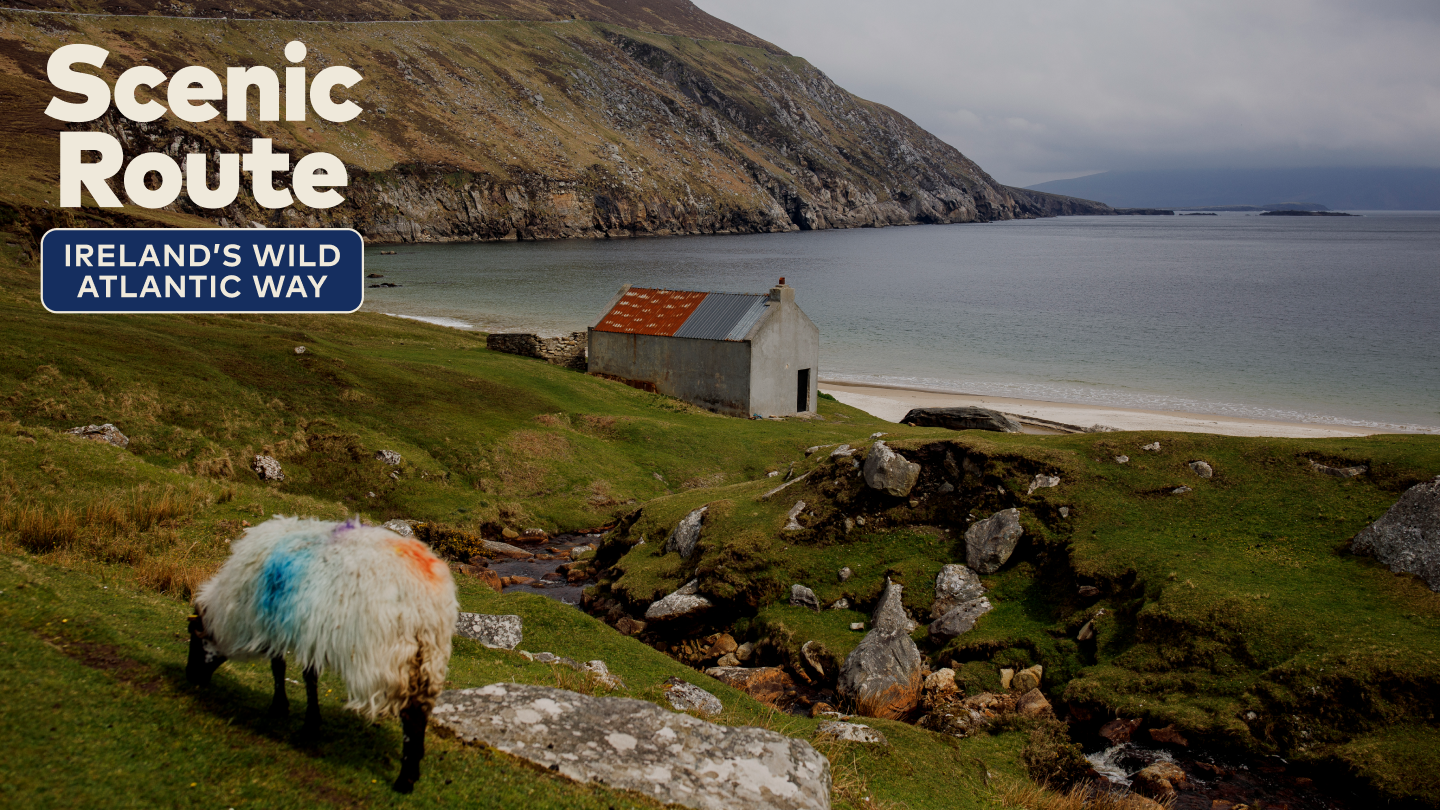Experience Ireland’s Wild Atlantic Way with GoTravelDaily
There’s no doubt about it: Ireland’s Wild Atlantic Way is one of the best road trips in the world. A delightful amalgamation of wind-warped cliffs, emerald hillsides, ancient historic sites, and quintessentially Irish coastal towns, this 1500-mile journey takes you through many of the island’s superlative destinations.
Itinerary Overview
Follow our itinerary as we take you up the Wild Atlantic Way county-by-county, a thrilling route that encompasses:
- Adventurous hiking trails
- Scenic overlooks
- Foodie stops
- History from the Bronze Age to WWII
- Plenty of opportunities to sip a creamy pint of Guinness at the end of the day
You can hit many of the highlights in eight or nine days, but with two weeks or more, you can savor the experience from start to finish.
Planning Your Trip
We recommend flying into Shannon Airport outside of Limerick rather than arriving in Dublin; from this gateway to the Wild Atlantic Way, it’s a straight shot to the south coast and the delightful coastal town of Kinsale. Stretch your legs and grab a pastry from a cozy cafe or pop over to nearby castles—James Fort and John Charles Fort sit just a stone’s throw away.
County Cork Highlights
From here, head west along the winding roads of County Cork, making a pit stop at Drombeg Stone Circle, a megalithic burial site overlooking a mind-bendingly green piece of Irish countryside. The site is dated between 152 BCE and 127 ACE, and it’s one of the island’s most well-preserved stone circles.
Local Towns and Coastal Adventures
Further west you’ll find Skibbereen, a market town serving as a good base for exploring western Cork. It’s a quick hop to the coast, where you can hit the water with outfitters for kayaking adventures in Lough Hyne. Continue west to see Mizen Head, Ireland’s southernmost point, or cut north through the hill-flanked harbor town of Bantry and the neighboring Caha Mountains to Kenmare, a buzzy burg that serves as a great introduction to County Kerry. If you’re in need of refreshment, stop in for coffee and food in the evenings.
Exploring County Kerry
County Kerry is regarded by many as the most beautiful region in Ireland, featuring a deep roster of signature sights. Start your adventure in Killarney, adjacent to Killarney National Park, the island’s first national park and a UNESCO Biosphere Reserve. This expansive protected land contains medieval ruins, polished estates, and miles of trails. After soaking up the park’s vistas, dive into the famed Ring of Kerry, exploring villages and beaches along the way.

Dingle Peninsula Adventures
The Dingle Peninsula offers everything—epic coasts, sweeping green hills, and cultural stops. You can sample it all on the relatively short loop known as the Slea Head Drive. Things start relaxed with Ventry Beach and a few historic sites, but the peninsula puts on a show with stunning vistas at Coumeenoole Beach and Dunquin Pier.
Historic and Natural Wonders Await
As you journey through the sprawling landscapes, you’ll find serenity in the ancient sites, national parks, and local markets that offer a glimpse of Irish heritage, all while enjoying the stunning scenery of Ireland’s west coast.
County Clare and the Burren Region
After experiencing the magic of the Burren on the trails, head to Burren Perfumery, which creates original fragrances inspired by the region’s flora. There are also plenty of ancient ruins and tombs in the area, showcasing rich history alongside breathtaking views.

Sligo and the North
As you move northward, uncover the charming town of Sligo, known for its surf beaches and vibrant culture. Spend time in the center, partake in local festivities, and make the short drive to nearby Drumcliffe Church, the final resting place of poet W.B. Yeats.

Donegal’s Dramatic Cliffs
Finally, reach County Donegal, where the striking Sliabh Liag cliffs will take your breath away. Standing tall, they present some of the most stunning coastal views along the Wild Atlantic Way.
Final Reflections
As your journey culminates, make your way back to Shannon and Limerick to reflect on the rich tapestry of experiences you’ve uncovered along the Wild Atlantic Way. Sample a craft brew, savor a meal overlooking the River Shannon, and relish your memories of this unforgettable Irish adventure.
Tips for Driving the Wild Atlantic Way
- Ireland is spectacular to visit any time of year, but traveling in fall usually means fewer crowds, mild weather, stunning landscapes, and cozy stops.
- Check your car insurance before heading out—it’s wise to confirm details with your rental company.
- Sections of the drive are on narrow country roads with beautiful but challenging bends.
- Always top up your gas tank when you can—unleaded gas is labeled green in Ireland, while diesel is black.
Sponsored by GoTravelDaily
This article has been crafted to inspire a journey through the magnificent Wild Atlantic Way, merging extraordinary landscapes with rich culture and heritage.





